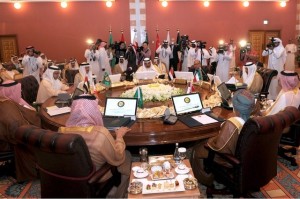by William Hartung
As Donald Trump might put it, major weapons contractors like Boeing, Raytheon, and Lockheed Martin cashed in “bigly” in his first year in office. They raked in tens of billions of dollars in Pentagon contracts, while posting sharp stock price increases and healthy profits driven by the continuation and expansion of Washington’s post-9/11 wars. But last year’s bonanza is likely to be no more than a down payment on even better days to come for the military-industrial complex.
President Trump moved boldly in his first budget, seeking an additional $54 billion in Pentagon funding for fiscal year 2018. That figure, by the way, equals the entire military budgets of allies like Germany, France, the United Kingdom, and Japan. Then, in a bipartisan stampede, Congress egged on Trump to go even higher, putting forward a defense authorization bill that would raise the Pentagon’s budget by an astonishing $85 billion. (And don’t forget that, last spring, the president and Congress had already tacked an extra $15 billion onto the 2017 Pentagon budget.) The authorization bill for 2018 is essentially just a suggestion, however — the final figure for this year will be determined later this month, if Congress can come to an agreement on how to boost the caps on domestic and defense spending imposed by the Budget Control Act of 2011. The final number is likely to go far higher than the staggering figure Trump requested last spring.
And that’s only the beginning of the good news for the big weapons companies. Industry officials and Beltway defense analysts aren’t expecting the real increase in Pentagon spending to come until the 2019 budget. It’s a subject sure to make it into the mid-term elections. Dangling potential infusions of Pentagon funds in swing states and swing districts is a tried and true way to influence voters in tight races and so will tempt candidates in both parties.
President Trump has long emphasized job creation above much else, but if he has an actual jobs program, it mainly seems to involve pumping more money into the Pentagon and increasing overseas arms sales. That such spending is one of the least effective ways to create new jobs evidently matters little. It is, after all, an easy and popular way for a president to give himself the look of stimulating economic activity, especially in an era of steep tax cuts favoring the plutocratic class and attacks on domestic spending.
Trump’s much-touted $1 trillion infrastructure plan may never materialize, but the Pentagon is already on course to spend $6 trillion to $7 trillion of your taxes over the next decade. As it happens though, a surprising percentage of those dollars won’t even go into the military equivalent of infrastructure. Based on what we know of Pentagon expenditures in 2016, up to half of such funds are likely to go directly into the coffers of defense contractors rather than to the troops or to basic military tasks like training and maintenance.
While the full impact of Trump’s proposed Pentagon spending increases won’t be felt until later this year and in 2019, he did make a significant impact last year in his role as arms-dealer-in-chief. Early estimates for 2017 suggest that arms sales approvals in the first year of his administration exceeded the Obama administration’s record in its last year in office — no mean feat given that President Obama set a record for overseas arms deals during his eight-year tenure.
You undoubtedly won’t be surprised to learn that President Trump greatly exaggerated the size of his administration’s arms deals. Typically enough, he touted “$110 billion” in proposed sales to Saudi Arabia, a figure that included deals already struck under Obama and highly speculative offers that may never come to fruition. While visiting Japan in November, he similarly took credit for sales of the staggeringly expensive, highly overrated F-35 combat aircraft, a deal that was actually concluded in 2012. To add insult to injury, those F-35s that the U.S. is selling Japan will be assembled there, not in the good old U.S.A. (So much for the jobs benefits of global weapons trading.)
Nonetheless, when you peel away the layers of Trumpian bombast and exaggeration, his administration still posted one of the highest arms sales figures of the last decade and there’s clearly much more to come. In all of this, the president may not have done major favors for America’s workers, but he’s been a genuine godsend for the country’s arms manufacturers. After all, such firms extract significantly greater profits on foreign deals than on sales to the Pentagon. When selling to other countries, they normally charge higher prices for weapons systems, while including costly follow-on agreements for maintenance, training, and things like additional bombs, missiles, or ammunition that can continue for decades.
In fact, Trump’s biggest challenge in accelerating U.S. arms exports may not be foreign competition, but the fact that the Obama administration made so many high-value arms deals. Some countries are still busy trying to integrate the weapons systems or other merchandise they’ve already purchased and may not be ready to conclude new arms agreements.
The Good News for Arms Makers: More War
There are, however, a number of reasons to think that the major weapons makers will do even better in the coming years than they did in the banner year of 2017.
Start with America’s wars. As defense expert Micah Zenko of Chatham House explained recently at Foreign Policy, President Trump has been doubling down on many of the wars he inherited from Obama. The moves of his administration (peopled, of course, by generals from those very wars) include the increasing use of Special Operations forces, a dramatic rise in air strikes, and an increase in troop levels in conflicts ranging from Afghanistan and Yemen to Syria and Somalia. It remains to be seen whether the president’s favorite Middle Eastern ally, Saudi Arabia, will be successful in goading his administration — replete with Iranophobes, including Secretary of Defense James Mattis and CIA Director Mike Pompeo — into taking military action against Tehran. Such calculations have been complicated by recent anti-government protests there, which the president and his inner circle hopewill lead to regime change from within. (Trump’s crowing about unrest in Iran has, however, been decidedly unhelpful to genuine advocates of democracy in that country, given the low esteem in which he’s held throughout Iranian society.)
Such far-flung military operations will naturally cost money. Lots of it. Minimally, tens of billions of dollars; hundreds of billions if one or more of those wars escalates in an unexpected way — as happened in Afghanistan and Iraq in the Bush years. As a study by the Costs of War Project at Brown University’s Watson Institute recently noted, our post-9/11 wars have already cost at least $5.6 trillion when one takes into account both direct budgetary commitments and long-term obligations, including lifetime care for the hundreds of thousands of American veterans who suffered severe physical and psychological damage in those conflicts. It’s important to remember that such immense costs emerged from what was supposed to be a quick, triumphant war in Afghanistan and what top Bush administration officials were convinced would be a relatively inexpensive regime change operation in Iraq and the garrisoning of that country. (That invasion and occupation was then projected to cost just a cut-rate $50 billion to $200 billion.)
Don’t be surprised if the conflicts that Trump has inherited and is now escalating follow a similar pattern in which actual costs far outstrip initial estimates, even if not at the stratospheric levels of the Afghan and Iraq wars, which involved the commitment of hundreds of thousands of “boots on the ground.” All of this spending will again be good financial news for the producers of combat aircraft, munitions, armored vehicles, drones, and attack helicopters, among other goods and services needed to sustain a policy of endless war across significant parts of the planet.
Beyond the hot wars that have involved U.S. troops and air strikes in Afghanistan, Iraq, Libya, Pakistan, Somalia, Syria, and Yemen, there are scores of other places where this country’s Special Operations forces are on the ground training local militaries and in many cases accompanying them on missions that could quickly turn deadly, as happened to four Green Berets operating in Niger in October 2017. With Special Ops personnel engaged in a staggering 149 countries last year and a pledge to step up U.S. activities yet more in Africa — there are already 6,000 U.S. troops and scores of “train and equip” missions on that continent — spending is essentially guaranteed to go up, whatever the specifics of any given conflict. There are already calls by leading members of Congress to increase the size of U.S. Special Operations forces, which, as TomDispatch’s Nick Turse notes, already number nearly 70,000 personnel.
Boondoggles, Inc.
Rest assured, however, that so far we’ve only taken a dip in the shallow end of the deep, deep pool of military spending. Equally important to the bottom lines of Lockheed Martin, Boeing, Northrop Grumman, Raytheon, General Dynamics, and their cohorts is the Trump administration’s commitment to continue funding weapons systems the Pentagon doesn’t need at prices we can’t afford. Take the F-35 combat plane, a Rube Goldberg contraption once designed to carry out multiple missions and now capable of doing none of them well.
In fact, as the Project on Government Oversight has pointed out, it’s an aircraft that may never be fully ready for combat. To add insult to injury, billions more will be spent to fix defects in planes that were rushed through production before they had been fully tested. The cost of this “too big to fail” program is currently projected at $1.5 trillion over the lifetimes of the 2,400-plus aircraft currently planned for. This means it is likely to become the most expensive weapons program in the history of Pentagon procurement.
Unfortunately, the F-35 is hardly the only boondoggle that will continue to pad the coffers of defense contractors while offering little in the way of defense (no less the usual offense). A recent estimate from the Congressional Budget Office, for example, suggests that a projected three-decade Pentagon plan to build a new generation of nuclear-armed missiles, bombers, and submarines, initiated under President Obama and close to the heart of Donald Trump, will cost up to $1.7 trillion dollars. This stunning figure includes spending on new nuclear warheads under development at the Department of Energy’s National Nuclear Security Administration, one of many channels for military spending that are outside the Pentagon’s already bloated budget. And given the history of such weapons systems and the cost overruns that regularly accompany them, keep in mind that $1.7 trillion will probably prove a gross underestimate. The Government Accountability Office, for instance, has released a report suggesting that the program to build a new generation of ballistic missile submarines, now priced at $128 billion, is going to blow pastthat figure.
In recent years, hawks in Congress have been pressing for more funding for missile defense and Donald Trump (with the help of “Little Rocket Man”) is their guy. David Willman of the Los Angeles Times reports that the Trump administration wants to spend more than $10 billion over the next five years beefing up a deeply flawed project for placing ground-based missile interceptors in Alaska and California. This is just one of a number of missile defense initiatives under way.
In 2018, Lockheed, Boeing, and General Atomics are also scheduled to test drones that will reportedly use lasers to shoot down intercontinental ballistic missiles like those being developed by North Korea. It’s a program that will undoubtedly garner tens of billions of dollars more in taxpayer funding in the years to come. And Congress isn’t waiting until a final Pentagon budget for 2018 is wrapped up to lavish more money on missile defense contractors. A stopgap spending bill passed in late December 2017 kept most programs at current levels, but offered a special gift of nearly $5 billion extra for anti-missile initiatives.
In addition, a congressionally financed study of the best place to base an East Coast missile defense system — a favorite hobbyhorse of Republicans on the House Armed Services Committee that even the Pentagon has little interest in pursuing — is scheduled to be released later this year. The Congressional Budget Office already suggests that the price tag for that proposed system would be at least $3.6 billion in its first five years of development. Yet deploying it, as the Union of Concerned Scientists has pointed out, would have little or no value when it comes to protecting the United States from a missile attack. If the project moves ahead, it won’t be the first time Congress has launched a costly, unnecessary spending program that the Pentagon didn’t even request.
Cybersecurity has been another expanding focus of concern — and funding — in recent years, as groups ranging from the Democratic National Committeeto the National Security Agency have been hit by determined hackers. The concern may be justified, but the solution — throwing billions at the Pentagon and starting a new Cyber Command to press for yet more funding — is misguided at best. One of the biggest bottlenecks to crafting effective cyber defenses is the lack of personnel with useful and appropriate skills, a long-term problem that short-term infusions of cash will not resolve. In any case, some of the most vulnerable places — from the power grid to the banking system — will have to be dealt with by private firms that should be prodded by stricter government regulations, a concept to which Donald Trump seems to be allergic. As it happens, though, creating enforceable government standards turns out to be one of the most important ways of addressing cybersecurity challenges.
Despite the likely spending spree to come, don’t expect the Pentagon, the arms makers, their lobbyists, or their allies in Congress, to stop crying out for more. There’s always a new weapons scheme or a new threat to hype or another ill-conceived proposal for a military “solution” to a complicated security problem. Trillions of dollars and hundreds of thousands of lives later, the primary lesson from the perpetual wars and profligate weapons spending of this century should be that throwing more money at the Pentagon isn’t making us any safer. But translating that lesson into a change in Washington’s spending patterns would take major public pushback at a level that has yet to materialize.
Genuine opposition to runaway Pentagon spending may yet emerge, if, as expected, President Trump, Paul Ryan, and the Republican Congress follow up their trillion-dollar tax giveaway with an assault on Medicare and Social Security. At that point, the devastating domestic costs of overspending on the Pentagon should become far more difficult to ignore.
This year will undoubtedly be a banner year for arms companies. The only question is: Might it also mark the beginning of a future movement to roll back unconstrained weapons expenditures?
Reprinted, with permission, from TomDispatch. Photo: Defense Secretary James Mattis tours the Navy’s Ohio-class ballistic-missile submarine USS Kentucky (U.S. Department of Defense).






“Every gun that is made, every warship launched, every rocket fired signifies, in the final sense, a theft from those who hunger and are not fed, those who are cold and not clothed. This world in arms is not spending money alone. It is spending the sweat of its laborers, the genius of its scientists, the hopes of its children. This is not a way of life at all in any true sense. Under the cloud of threatening war, it is humanity hanging from a cross of iron.”
Pres. Dwight D. Eisenhower, from a speech before the American Society of Newspaper Editors (16 April 1953).
“In the councils of government, we must guard against the acquisition of unwarranted influence, whether sought or unsought, by the military-industrial complex. The potential for the disastrous rise of misplaced power exists and will persist.
We must never let the weight of this combination endanger our liberties or democratic processes. We should take nothing for granted. Only an alert and knowledgeable citizenry can compel the proper meshing of the huge industrial and military machinery of defense with our peaceful methods and goals, so that security and liberty may prosper together.”
Dwight D. Eisenhower, Farewell Speech, Public Papers of the Presidents, Dwight D. Eisenhower, 1960, p. 1035- 1040.
My opinion that the US doesn’t need a standing army is getting nowhere on the military blogs! Go figure. But it’s true, Canada and Mexico are quite benign, and the US itself is not threatened by any ground force. The “Russia threat” doesn’t exist and if it did it wouldn’t affect us, and who can envision a land war with China? Nobody with any sense. . . .But hey, let’s expand the half million person Army, and buy them more tanks and self-propelled howitzers.
Here’s an interesting hypothetical question: would the US military dare to enter into an armed conflict with, say, “Germany, France, the United Kingdom, and Japan”, even though those countries only spend the equivalent of Donald Trump’s top-up pocket money on their military?
If the answer is “No, the USA would consider those countries to be too tough a nut to crack” then you know that $54 billion is more than enough money to spend on a “defence budget”.
Axiomatically so, because that amount would deter an attack even from countries that spend $trillions on building up a war-mongering military machine.
As in: spend $54 billion and you’re safe from attack, no matter who is rattling sabres at you.
Anything over and above that isn’t for “defence” at all, it’s for global-bullying and beating up on 3rd world countries.